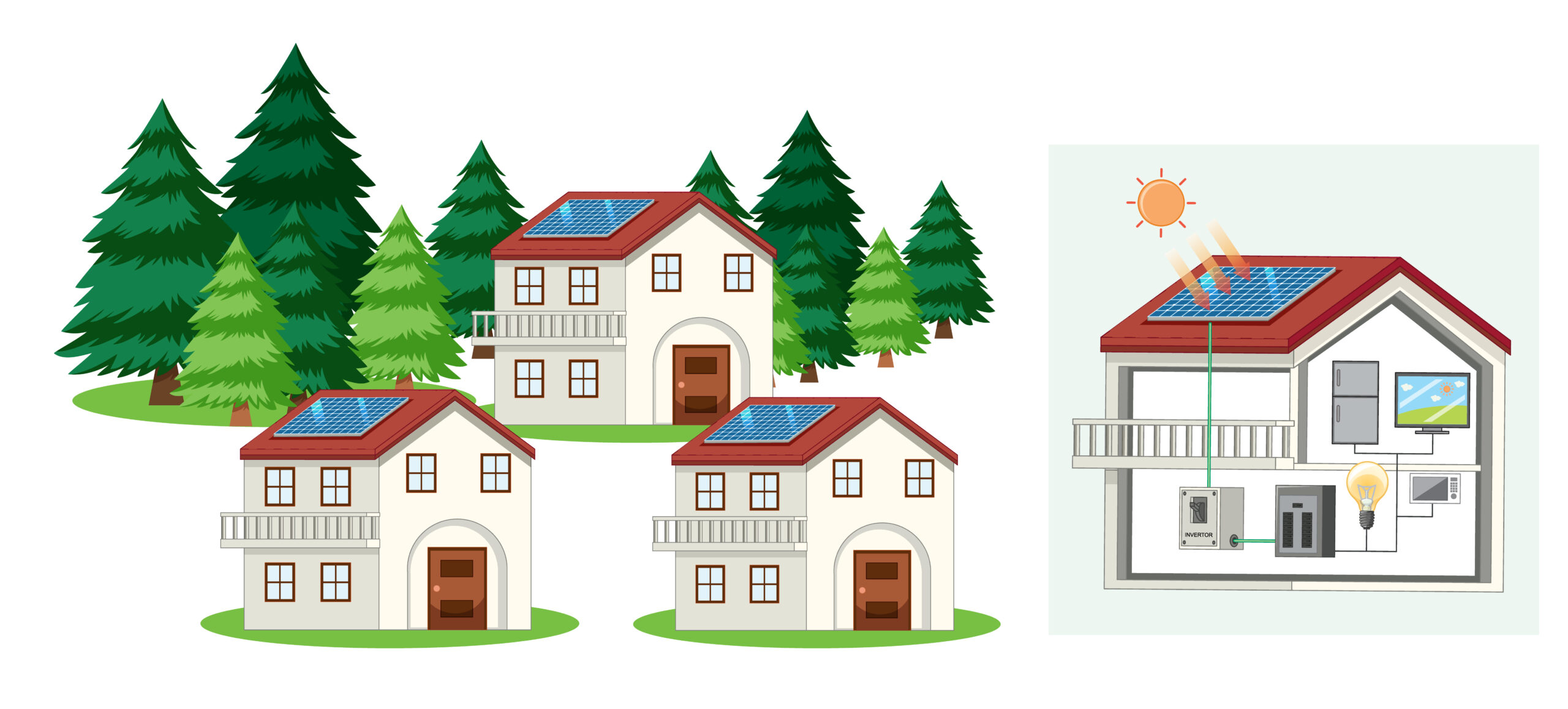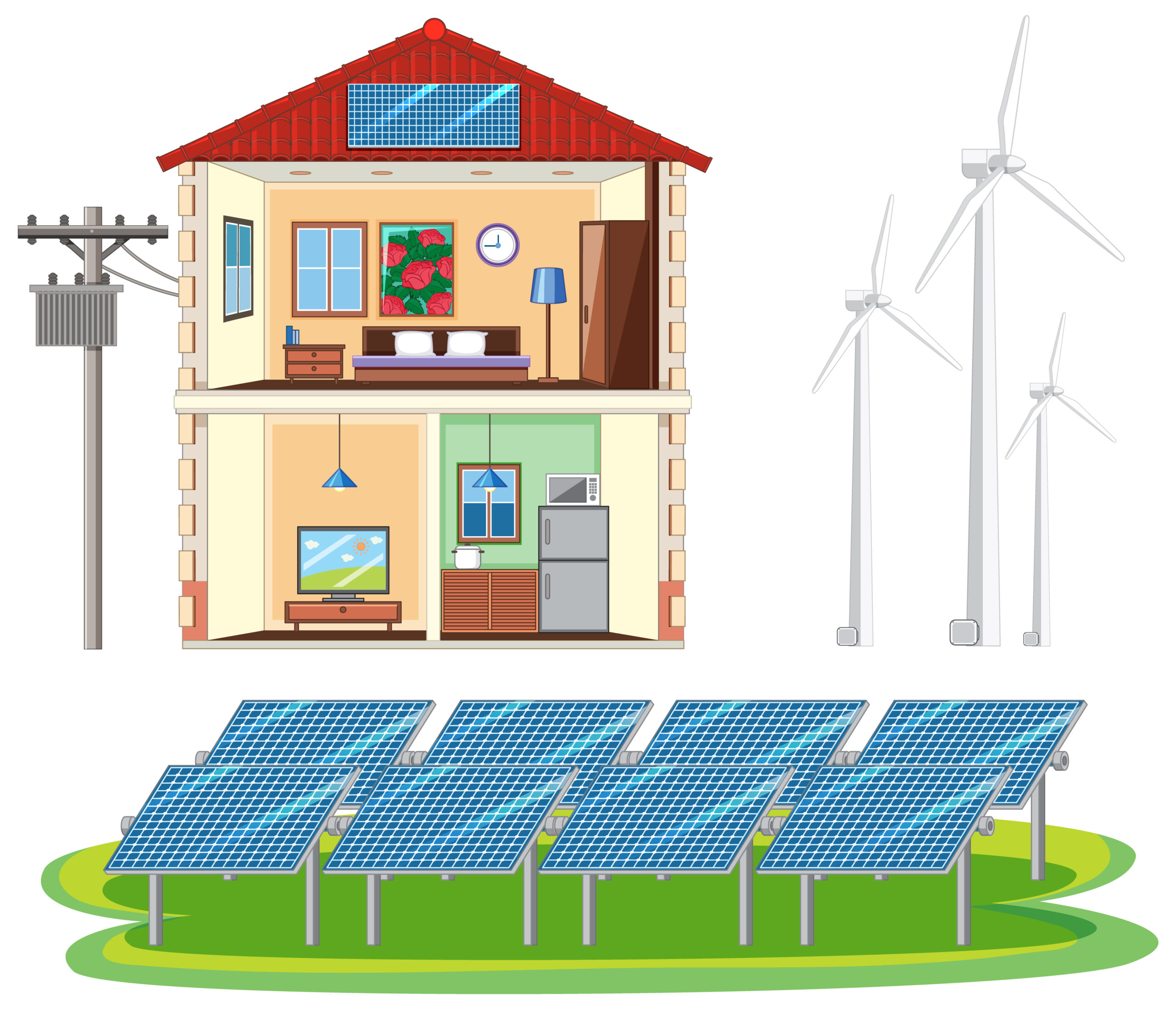In an era marked by a growing awareness of environmental issues and the need for sustainable solutions, a small solar power system has emerged as a beacon of hope. These systems allow us to tap into the boundless energy of the sun to power our homes and reduce our carbon footprint. This article delves deep into the realm of small solar power systems, offering insights, practical tips, and expert advice on how to make the most of this renewable energy source.
Understanding Small Solar Power Systems
Small solar power systems, also known as residential solar systems, are compact setups that capture sunlight and convert it into electricity for household use. These systems include photovoltaic (PV) panels, inverters, batteries, and electrical wiring. They are designed to generate clean and renewable energy while requiring minimal maintenance.
Benefits of Embracing Solar Energy
Switching to a small solar power system brings an array of benefits to homeowners. Not only does it lead to a significant reduction in electricity bills, but it also helps combat climate change by decreasing reliance on fossil fuels. Moreover, solar energy systems contribute to energy independence and can increase the value of your property.
Components of a Small Solar Power System
A typical small solar power system comprises several key components:
- Photovoltaic (PV) Panels: These panels consist of solar cells that capture sunlight and convert it into direct current (DC) electricity.
- Inverters: Inverters convert the DC electricity from the panels into alternating current (AC) electricity, which is suitable for household appliances.
- Batteries: Some systems incorporate batteries to store excess energy for use during cloudy days or at night.
- Mounting and Racking: These components provide structural support for the panels and ensure optimal sunlight exposure.
- Electrical Wiring: Wiring connects the various components and ensures the seamless flow of electricity.
Installing Your Small Solar Power System
Installing a small solar power system may seem daunting, but it can be a straightforward process with the right guidance. Here’s a step-by-step overview:
- Site Assessment: Evaluate your property’s sun exposure, shading, and available space to determine the best location for the panels.
- Design and Permitting: Create a system design, obtain necessary permits, and ensure compliance with local regulations.
- Panel Installation: Mount the panels on the roof or ground, securely attaching them to the racking system.
- Inverter Installation: Connect the inverter to the panels and the electrical system of your home.
- Electrical Wiring: Install wiring to connect the inverter, panels, and batteries (if applicable).
- System Testing: Verify that the system is functioning correctly and efficiently generating electricity.
- Utility Connection: If allowed, connect your system to the grid to take advantage of net metering or feed-in tariffs.
Maximizing Efficiency and Output
To optimize the performance of your small solar power system, consider these tips:
- Regular Maintenance: Keep the panels clean and free from debris to ensure maximum sunlight absorption.
- Monitoring: Use monitoring systems to track energy production and detect any issues promptly.
- Energy-Efficient Appliances: Invest in energy-efficient appliances to make the most of the generated solar power.
- Battery Storage: If you have batteries, manage their charge-discharge cycles effectively for a prolonged lifespan.
Exploring Solar Energy Potential
As the demand for renewable energy sources grows, the potential of small solar power systems becomes more evident. With advancements in technology and the increasing efficiency of solar panels, homeowners can tap into the abundant energy provided by the sun, regardless of their geographical location. From urban rooftops to rural landscapes, the adaptability of these systems allows for widespread adoption and a brighter, greener future.
Overcoming Common Misconceptions
Myth: Solar Panels Only Work in Sunny Climates. Reality: While solar panels do perform optimally in direct sunlight, they can still generate electricity on cloudy days or in partially shaded areas.
Myth: Solar Energy Is Expensive and Inaccessible. Reality: The cost of solar panels has significantly decreased in recent years, making them more affordable and accessible to a wider range of homeowners.
Myth: Solar Panels Require Constant Maintenance. Reality: Solar panels are relatively low-maintenance, requiring occasional cleaning and routine check-ups to ensure optimal performance.
Real-Life Success Stories
Countless homeowners have embraced small solar power systems and reaped the benefits of renewable energy. From reducing monthly energy bills to contributing to a cleaner environment, these success stories showcase the positive impact of solar adoption. One such example is the Smith family, who installed a small solar power system on their suburban home and saw a 40% decrease in their electricity bills within the first year.
The Future of Solar Energy
As technology continues to evolve, the future of small solar power systems holds even more promise. Innovations in panel efficiency, energy storage, and integration with smart home technologies are on the horizon. The gradual shift towards a decentralized energy landscape, where individual homes generate and store their power, will contribute to a more resilient and sustainable energy grid.
Powering Up Your Knowledge: Small Solar Power System Terminology
To navigate the world of small solar power systems, familiarize yourself with these essential terms:
- Solar Cell Efficiency: The ability of solar cells to convert sunlight into electricity.
- Net Metering: A billing arrangement where excess energy generated by your system is credited back to the grid.
- Feed-in Tariffs: Payments made by utilities to homeowners for the excess energy they feed into the grid.
- Off-Grid System: A self-sufficient solar power system that operates independently from the utility grid.
- Grid-Tied System: A solar power system connected to the utility grid, allowing for energy exchange.
- Inverter Efficiency: The efficiency of the device that converts DC electricity from the panels into AC electricity.
Making an Informed Decision
Before embarking on your solar journey, it’s essential to conduct thorough research, gather quotes from reputable installers, and assess your energy needs. Consider factors such as your location, available space, and budget. By making an informed decision, you can choose the right small solar power system that aligns with your goals and values.
Sustainability Starts at Home
In a world grappling with climate change, every action we take to reduce our carbon footprint matters. Embracing a small solar power system isn’t just a practical choice; it’s a statement of commitment to a cleaner, more sustainable future. By harnessing the power of the sun, we contribute to the global effort to combat environmental challenges and create a world where renewable energy reigns supreme.
Embrace the Solar Revolution
The small solar power system revolution is underway, and you have the opportunity to be part of it. By integrating solar energy into your daily life, you not only save on energy costs but also contribute to a greener planet. Embrace the power of the sun and embark on a journey towards a brighter, more sustainable future for yourself and generations to come.
Stay Informed and Inspired
As the solar energy landscape continues to evolve, staying informed is key. Explore reputable sources such as the Solar Energy Industries Association (SEIA) and the U.S. Department of Energy’s Office of Energy Efficiency and Renewable Energy for the latest updates, trends, and insights. By staying engaged, you can continue to make informed decisions that align with your sustainability goals.
Conclusion: A Ray of Hope
In a world where environmental concerns weigh heavy on our collective conscience, the small solar power system emerges as a ray of hope. It represents a harmonious coexistence with nature, a step towards energy self-sufficiency, and a beacon of sustainability. By harnessing the sun’s energy, we empower ourselves to shape a brighter, cleaner, and more prosperous future. Let us seize this opportunity and embark on a journey toward a world powered by the boundless energy of the sun.
